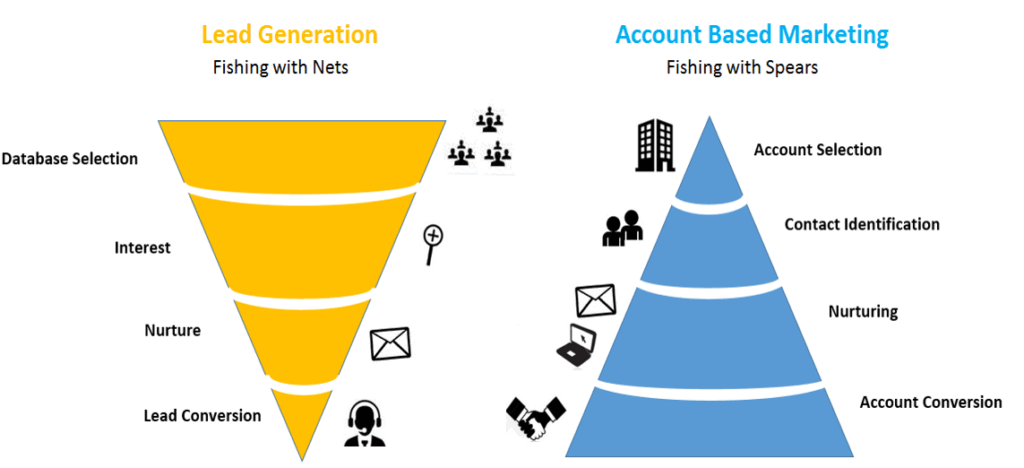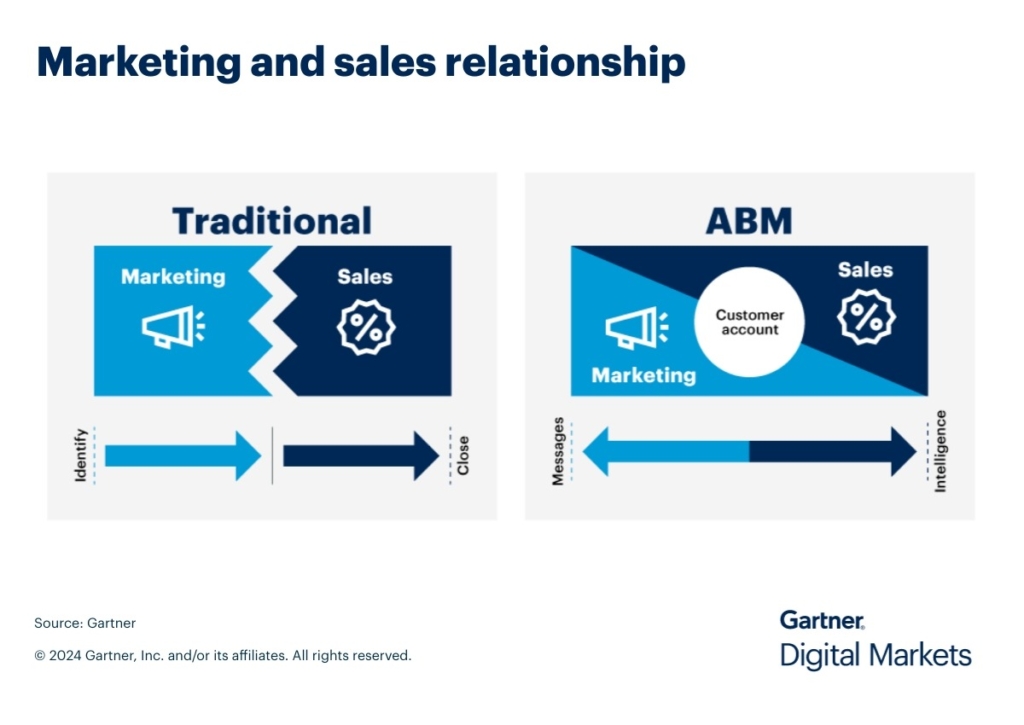How to Utilize Account-Based Marketing for Targeted Leads
Many B2B organizations struggle with lead generation that produces volume without impact. Account-based marketing (ABM) offers a solution by shifting the focus from quantity to quality.
Instead of chasing a broad pool of prospects, ABM concentrates on high-value accounts with the greatest revenue potential. By combining personalization, data-driven insights, and close collaboration between sales and marketing, ABM creates stronger engagement and measurable results.
Quick Takeaways
- Account-based marketing concentrates on high-value accounts and creates tailored campaigns that speak directly to decision-makers within those organizations.
- Personalized outreach improves engagement, which leads to higher conversion rates and stronger long-term relationships.
- Successful ABM requires close alignment between sales and marketing teams, with shared goals and integrated workflows that maximize impact.
- Data and technology play a central role, helping teams identify target accounts, personalize outreach, and measure results effectively.
- When executed strategically, ABM produces higher-quality leads, stronger ROI, and a more efficient use of resources than traditional lead generation methods.
What Is Account-Based Marketing?
Account-based marketing is a growth strategy that treats each account as a unique market. It relies on personalized campaigns designed for specific organizations and stakeholders rather than broad industry segments. This approach emphasizes building meaningful relationships with decision-makers, addressing their pain points, and guiding them through a complex buying process.

While traditional lead generation emphasizes volume, ABM prioritizes quality. It ensures that sales and marketing efforts reach accounts that match the ideal customer profile (ICP), making every interaction more relevant and impactful.
Benefits of Account-Based Marketing for Targeted Leads
Higher Conversion Rates
Tailored content and outreach resonate with the unique needs of each account. Personalized engagement builds trust and increases the likelihood of advancing deals. In many cases, organizations that adopt ABM report shorter sales cycles because decision-makers feel that their specific concerns are addressed early in the process.
Smarter Resource Allocation
Focusing on fewer accounts allows teams to invest more deeply in personalization and strategic outreach. This targeted investment delivers better outcomes with less wasted effort. It also helps budget owners justify spending, since every campaign can be tied directly to measurable account results.
Improved ROI
ABM strategies connect directly to revenue impact. By dedicating resources to accounts most likely to convert, organizations achieve greater return on investment. Over time, these results compound as companies refine their ICP and apply insights from one campaign to strengthen the next.
Stronger Sales and Marketing Alignment
ABM requires collaboration at every stage. Sales and marketing share insights, define goals, and coordinate campaigns, creating a unified approach to account engagement. This alignment reduces friction between departments and ensures that teams can respond quickly to changes in account priorities.

Key Steps to Implement an Account-Based Marketing Strategy
1. Identify and Prioritize High-Value Accounts
Start with a clear definition of the ideal customer profile. Consider firmographics, buying behavior, and strategic value. Use data from CRM systems, intent tools, and market research to build a target account list. Periodically review and update this list to reflect new opportunities and changes in market dynamics.
2. Align Sales and Marketing Teams
Effective ABM depends on alignment. Establish shared metrics, create joint account plans, and maintain open communication. Regular collaboration ensures that both teams work toward the same objectives. Consistent check-ins between sales and marketing leaders also allow teams to course-correct quickly if an account’s engagement level changes.
3. Create Personalized Campaigns
Develop content tailored to each account. Personalized emails, targeted ads, curated content hubs, and custom landing pages demonstrate a deep understanding of client needs. Multichannel engagement ensures that the message reaches stakeholders in the formats they prefer. Campaigns should also address different stages of the buyer journey, from awareness to decision-making.
4. Leverage Data and Technology
Technology plays a central role in ABM success. CRM platforms, marketing automation, and intent data tools help identify opportunities, personalize outreach, and track engagement across the buyer journey. Integrating these systems provides a single view of account interactions, which enables better decision-making and more consistent engagement.
5. Measure and Optimize Campaigns
Establish metrics that tie ABM success to business impact. Track engagement, pipeline growth, and revenue contribution. Use analytics to refine strategies, improve targeting, and strengthen future campaigns. Continuous measurement also helps teams demonstrate the value of ABM to executive leadership and secure ongoing support.
Examples of Account-Based Marketing in Action
Account-based marketing delivers results when organizations apply it strategically. For example, a company targeting enterprise clients may create one-to-one campaigns that address executive-level priorities. Industry-specific campaigns can highlight regulatory knowledge or market expertise that speaks directly to buyer concerns. In another scenario, an organization pursuing strategic clients with high lifetime value might develop personalized events or exclusive content tailored to those accounts.
Challenges and How to Overcome Them
Data Silos
When information is spread across multiple platforms, gaining a full account view becomes difficult. Integrating data sources ensures that both sales and marketing have access to accurate insights. Investing in platforms that unify data and provide real-time account visibility prevents teams from working with incomplete or outdated information.
Resource Constraints
Personalization requires time and effort. Prioritizing accounts based on revenue potential and strategic importance helps maximize impact with available resources. Organizations can also adopt tiered ABM models, where the most valuable accounts receive one-to-one campaigns while others receive one-to-few or one-to-many strategies.
Measurement Issues
Organizations often struggle to prove the value of ABM. Aligning metrics with revenue and pipeline outcomes provides a clear picture of impact and reinforces stakeholder buy-in. Setting baseline metrics before launching ABM campaigns makes it easier to track progress and showcase improvements over time.
Best Practices for Sustained ABM Success
To maintain long-term success, organizations should view ABM as an ongoing strategy rather than a one-time campaign.
Keep account lists updated to reflect changing markets and priorities. Maintain close collaboration between sales and marketing through regular planning sessions and joint reviews. Use a mix of channels (email, social, direct mail, and in-person events) to engage accounts in meaningful ways. Finally, continuously test and optimize campaigns, using data to guide improvements and sharpen targeting.
Strengthen Lead Generation with Televerde Today
Account-based marketing offers a proven path for organizations that want to generate targeted leads and maximize revenue opportunities. By focusing on high-value accounts, aligning sales and marketing, and delivering personalized engagement, ABM transforms lead generation into a strategy that produces measurable business results.
Televerde’s demand generation solutions use strategy, data, and expert support to help you engage high-value accounts and convert them into lasting customers. Contact us to learn more.

